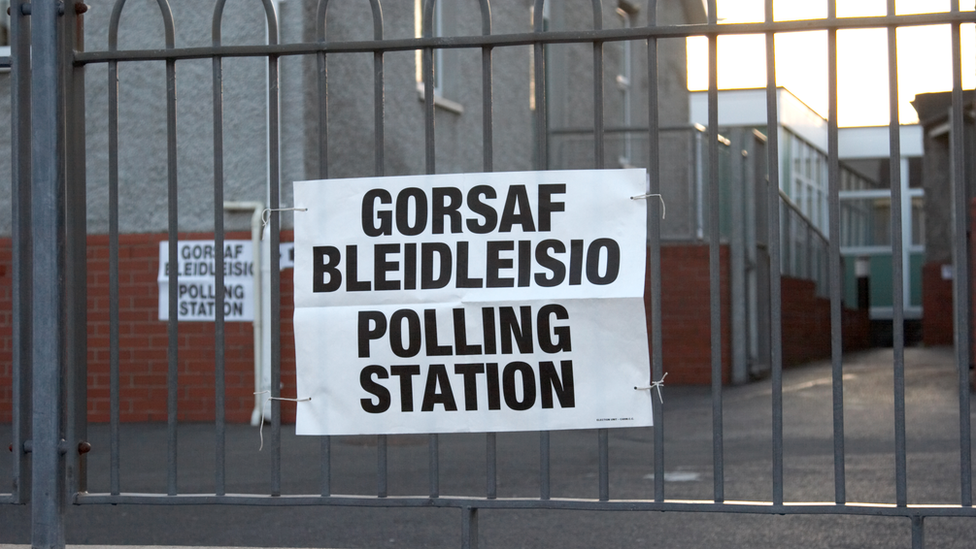Wales council elections 2022: A simple guide
- Published

Welsh voters will be going to the polls on 5 May to choose their local councillors.
The election will decide who runs your local authority, which makes decisions on transport, schools, social services and waste.
And, for the first time, Wales will experiment with early voting in a small number of local authorities.
What are Welsh councils?
There are 22 councils in Wales, with a total of 1,234 seats in 762 wards up for grabs.
Wards cover a specific geographic area. Some wards have just one councillor but some may have two or more.
Unlike the Welsh or UK parliaments councillors cannot pass their own laws. But they can make decisions on how local services are run.
They also decide how much money is raised locally in council tax.
What's at stake?
Labour will be hoping to make up lost ground after it lost more than 100 councillors in the last elections in 2017, despite remaining dominant with control of seven authorities.
For the Conservatives, who did well in 2017 gaining 80 seats, it will be seen as a test of how voters see Boris Johnson's UK government - after months of difficult headlines, and the war in Ukraine.
The Tories have majority control of one council - Monmouthshire.
Plaid Cymru - which has a majority in Gwynedd - will want to build on its modest gains in 2017, while the Welsh Liberal Democrats will be hoping to make up for lost ground.
Independents are a big factor in Welsh council elections too, making up the second largest group of candidates last time around.
How does the election work?
Unlike elections in England, all council seats in Wales are voted for in one go.
Voters will get a ballot paper to select which candidates they want to back. If there is more than one councillor in a ward voters will get more than one vote.
It is first past the post, so the winners in the ward are the candidates who win the most votes.
If there is not a clear majority for one party it will be up to the councillors to decide who takes control and becomes leader - most councils were in no overall control in 2017.
Most people who do not have a postal or proxy vote will vote at a polling station on 5 May, which will be open from 07:00 to 22:00 BST.
Where can I vote early? How do I get a postal vote?
The Welsh government is experimenting with new arrangements to allow people in four council areas to vote early.
In Blaenau Gwent, the Blaenau Gwent Learning Zone in Ebbw Vale will be open for residents of the county as well as students to vote in the week leading to election day.
Council offices in Ystrad Mynach and Pontypool will be open for residents of Caerphilly and Torfaen respectively on the weekend before election day.
In Bridgend, a polling station will be created in a school so pupils can vote ahead of election day, and polling stations in wards that have had low turnouts will also be open.
Who can vote?
There are 2.3 million voters in Wales.
Like last year's Senedd election, anyone over the age of 16 can vote, as can foreign nationals.
Voters must be living in Wales and registered to vote. They can be a British, Irish or Commonwealth national, an EU citizen or a foreign national who is permitted to be in the UK.
To take part you must be registered to vote by the morning of the 14 April. You can register online, external.
People can also choose to vote by post. The deadline for applications is 19 April - you will need to put the request in writing using the forms here, external.
When will we know the results?
All councils in Wales are expected to count their votes on Friday, rather than overnight.
It means we will not know the make-up of Wales' 22 authorities until that evening at the earliest.
Results will be reported on the BBC website and in TV and Radio bulletins throughout the day.
The original graphic image accompanying this report was taken down since the source picture was altered. Whilst there was no intention to mislead we acknowledge that this should not have happened and is not acceptable BBC practice.


